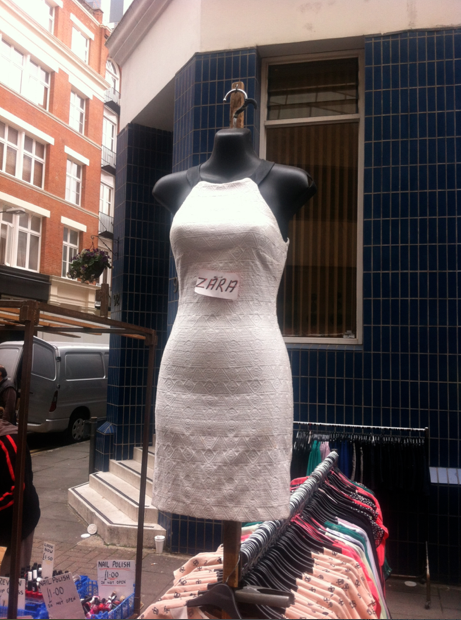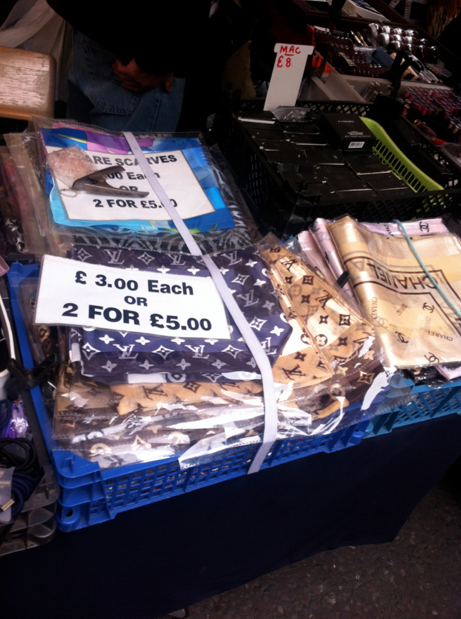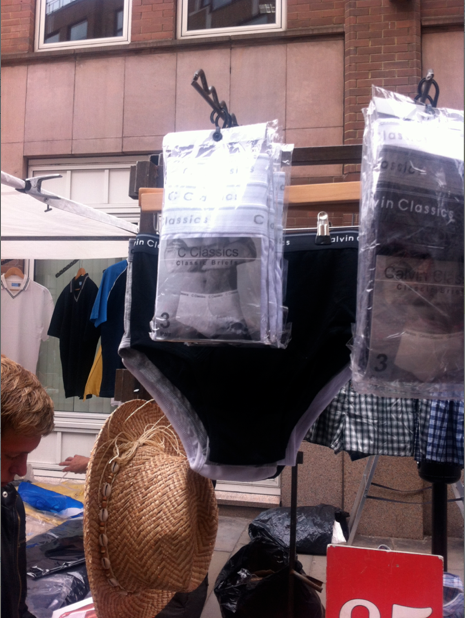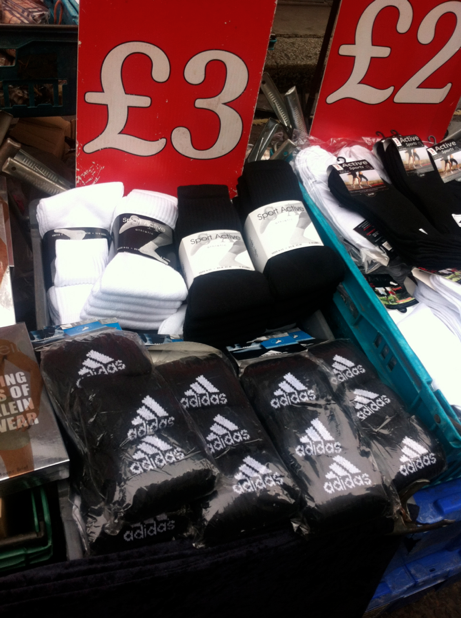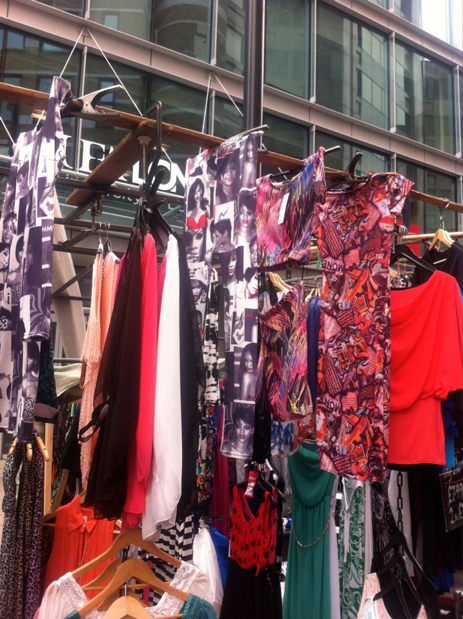A CITY’S STREET MARKETS are all too often dismissed – particularly by the fashion and design community – as having little value and relevance in contemporary culture; however these informal economies1 may have a more profound significance in illustrating our cultural behaviour and its symbiotic relationship to commerce. A recent trip to London’s inner city Petticoat Lane market got us thinking about what these retail venues might offer in reflecting on our own consumer condition.
Fashion wares for sale in a street market are widely considered to be the final stage in a product-cycle bracket.2 A closed system based on a hierarchy; from inception at a high design level, to obliteration, the ‘trickle-down’ effect has a beginning, middle and end. Here in Petticoat Lane, like many other markets of its kind, knock-offs and end of line styles are brazenly displayed with little regard to the context or display originally intended for the product. So we see this strange fracture, where traces of original design remain, but is so far removed from its source at the top of a fashion cycle, that the piece takes on entirely new meaning. The well-known branding of high fashion companies is rendered ironic and bemusing to a critical consumer, only made more awkward in the hand-written signs and misspelled logos for companies like Zara, Calvin Klein and Gucci.
Inversely we could view these products as offering a more sophisticated existence. The distilled garment types and brand imagery that feature in these stalls reflects the enduring tastes and values of the mass market. Why for example has the Louis Vuitton monogram captivated the consumer so intensely and for so long? Or why does the well-worn and adapted slogan ‘Keep Calm and Carry On’ – certainly in England – have such mass appeal? Why have certain brand iconography or garment formulas managed to hold up through the ruthless fashion system while others flounder, and how have they taken such stronghold over other branding shapes and forms that pass through the consumer space? No place is better to experience and muse over these products than the market. Admittedly the experience of a market is an untamed visual scramble, with products piled and hung in the most space efficient displays possible, but wandering the overflowing stalls of a street market can also invite a more profound experience. The repetitive iconography found in these places, which has taken such great hold on consumer culture, offers an insight into the fashion system as well as to our own engagement with the use of advertising on our bodies.
